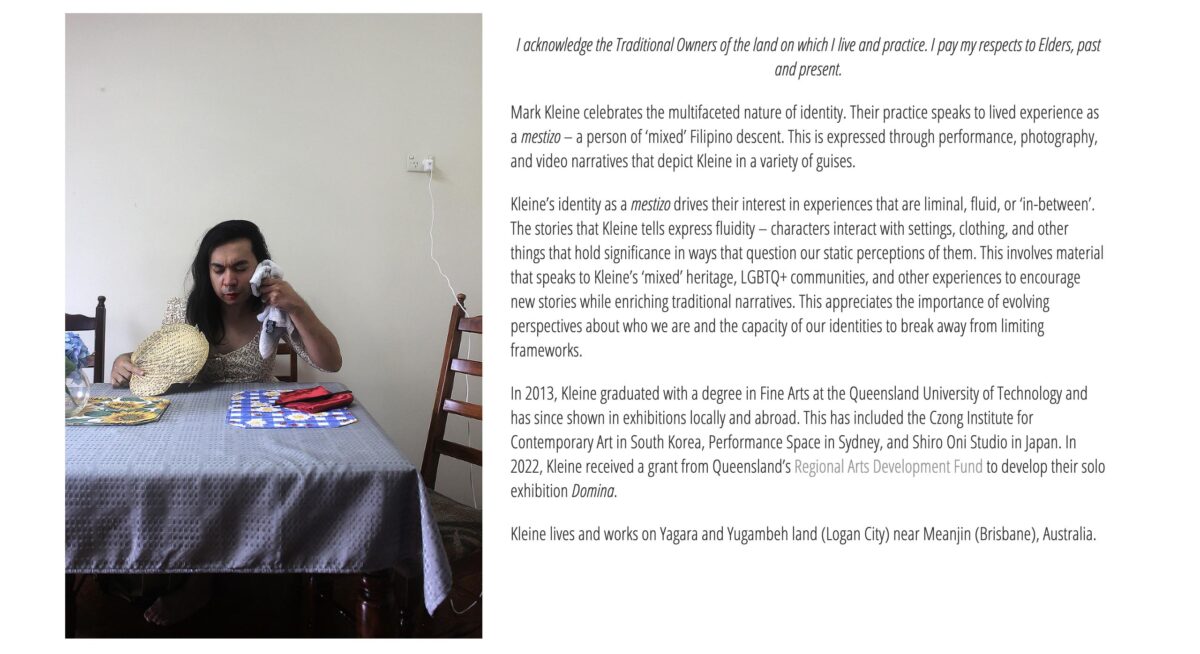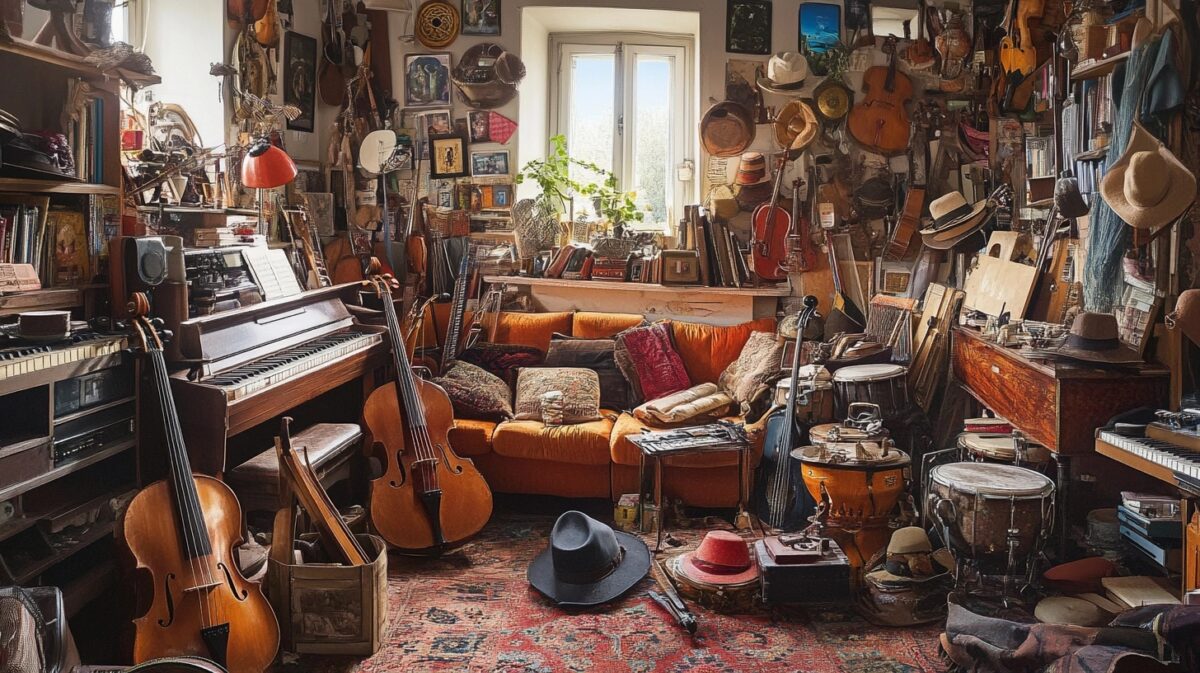August 26, 2024
Writing your artist bio is is essentially introducing yourself to the reader without quite knowing who the reader is going to be. That’s challenging, so I’d like to offer some suggestions and examples to make it easier.
The Challenges
We struggle with knowing what to include or exclude when writing about ourselves. The task can feel paralyzing. The challenge lies in finding the right balance between professionalism and personality—and in presenting your achievements (whether many or few) in a way that is just plain interesting. Even better would be to make it memorable in some way.
You definitely don’t want a bio that’s nothing but a string of details that could be interchangeable with those of others. But then again, you do want to cover the ground that’s expected. So…
What to include in an artist bio
1. Opening hook: Begin with an engaging sentence that captures your essence as an artist and sets the tone for your bio. I’d personally recommend not starting with where you were born, grew up or were educated—this is an artist’s bio so start with your art practice.
2. Artistic journey & education: Briefly touch on your background, key influences, and pivotal moments that have shaped your work—mentioning things that will get your reader to think “That’s interesting!” (and consider leaving out other details). You can include relevant formal education, workshops, or mentorships that have contributed to your development—especially if it gives insight into your creative process.
3. Current practice: You might describe your current work and themes—and even mention specialized techniques or mediums you work with—especially if they set you apart in your field. You might also mention upcoming projects or areas of exploration. Optional.
4. Achievements and recognition: You can highlight notable accomplishments, exhibitions, awards, or collaborations, tailored to your career stage. Just keep it brief in a narrative bio—remember it’s understood that if you’ve had a retrospective at MoMA you’ve had a lot of smaller shows in your lifetime.
One idea to keep in the back of your head is to write at least part of it in a way that tells your story such that the reader would not only find it interesting but be able to tell a story about you to someone else after reading it.

How long should an artist bio be?
It’s a good idea to write a short version and a longer version and you can also attach (or link to, if online) a c.v. The c.v. should definitely have the information on how to contact you and follow you but you might include a link on an artist’s bio with that information also if there’s a chance it’ll be used in print or on someone else’s website.
More importantly, be utterly truthful and infuse your unique voice throughout the bio, reflecting who you are as an artist. This might be the hardest thing to do, given that you’re writing for strangers, but you can role-play with ai (maybe use character.ai or personas in another model) to test-drive your writing for being either too boring or too audacious.
Artist’s bio examples
To help with finding your comfort zone, here’s a selection of artist bios with various approaches. These range from brief to extensive, formal to casual, and cover different styles of presenting an artist’s background and work:

rurikov-simes.com – opens poetically, followed by multiple sections covering other aspects
angelafreiberger.com – a lengthy conceptual and historical approach, opening with an artist’s statement
arianedelacampagne.com – a narrative-style artist bio that centers the family roots in Armenia in relation to her art.
conniejosefs.com – a writer’s bio organized with headers, showing a clear, client-oriented focus.
frhoghollow.com – an outsider artist offering the choice of a c.v. or a very unconventional bio.
harrietyoung.com – a story of a deceased artist about whom little is known.
harrisongoldbergarts.com – a very casual third-person artist bio followed by artist statements and testimonials.
heyyeunjang.com – third person bio that opens with a statement that’s as enigmatic as the artist’s artwork.
judithstahlschidlowsky.com – a c.v-like artist bio with a link to the artist’s statement.
marksteffenkleine.com – a short artist bio that gives a clear sense of who the artist is and how it relates to their work.
morganlennon.com – a third person bio in a strong marketing style—with links to encourage readers to follow her news.
sethwjames.com – a one-sentence, a short, and a long author’s bio with high and low-res portrait images
suecarlson.com – a bio that explains how the artist evolved, followed by more c.v-like details.
susankatzstudios.com – an artist’s statement followed by a link to a full c.v.
susannaplotnick.com – a short narrative artist bio followed by c.v-like details.
tomclevelandprojects.com – a short artist bio giving very personal context to the recent and current work only.
windychien.com – a narrative bio that is very succinct, focusing on career highlights.
wendywidellwolff.com – an artist’s statement with a link to a c.v.

Choose your style
When reading these examples, pay attention to which bios engage you most and why—how they satisfy your curiosity about the artist, which ones enhance your appreciation of the artist’s work, and how they reflect the artist’s personality.
Notice how writing in the third person might give a more professional tone while writing in the first person creates a more personal approach. Pay attention to the language—does it sound active and dynamic? Does it use jargon or is it clear and easy to understand?
Remember, these are just examples to inspire you. Your bio should ultimately reflect your unique artistic identity and career goals. Have someone review what you’ve written and update it often to keep it alive and fresh.
I once saw a play called “Floydada” for which the music was composed by an artist whose bio in the program began like this:
“Composer Seth Bedford likes wandering the West Village in search of coffee and is passionately committed to daydreaming. He is entirely too enthusiastic about Mid-Century Modern design and architecture, 1930’s Weimar Kabarett, 1960’s French Pop, attempting to paint, and pretending to learn new languages. When he is not doing those things, he composes silly music and teaches elementary aged children to do the same.”
The rest of his bio provided more conventional details about his background but never completely lost the personality with which it began. This whimsical opening set a tone that might not be right for everyone, but it definitely got my attention in a way that motivated me to read the rest of it.
Seth Bedford’s current online bio opens differently to the one I quoted at the beginning of this article. But although the beginning is more standard, even there he finishes with this very personal and whimsical line:
“There are entirely too many musical instruments and hats in his house.”

And while I’ve included the AI-generated image above because that last whimsical line in Seth Bedford’s bio just creates a picture in your imagination as you read it, which helps to make it memorable, I should add that what you absolutely don’t want to do is lean heavily on AI for help writing your artist bio.
It’s fine to write your bio and then run it through a model like Claude for a few editing tips but there’s a good chance you’ll get a revised version that sounds like a bit of marketing-speak notched up to the highest level. Some of it will be tempting to use, as Claude is very good at organizing ideas and it might be easier to read. But even if you use bits and pieces to edit your original text, don’t send or publish that bio until at least a week or two has gone by.
It’s very easy, once you’ve cut out the worst of the marketing-speak, to think you’ve got something worth reading. But you may very well find that two weeks later you’re still looking at something that doesn’t sound like you. Edit again until it is worded the way you would write about yourself.
And while you must remember that the ultimate goal of your artist bio is to engage your intended audience, consider writing your artist’s bio a creative opportunity—and have fun with it!





